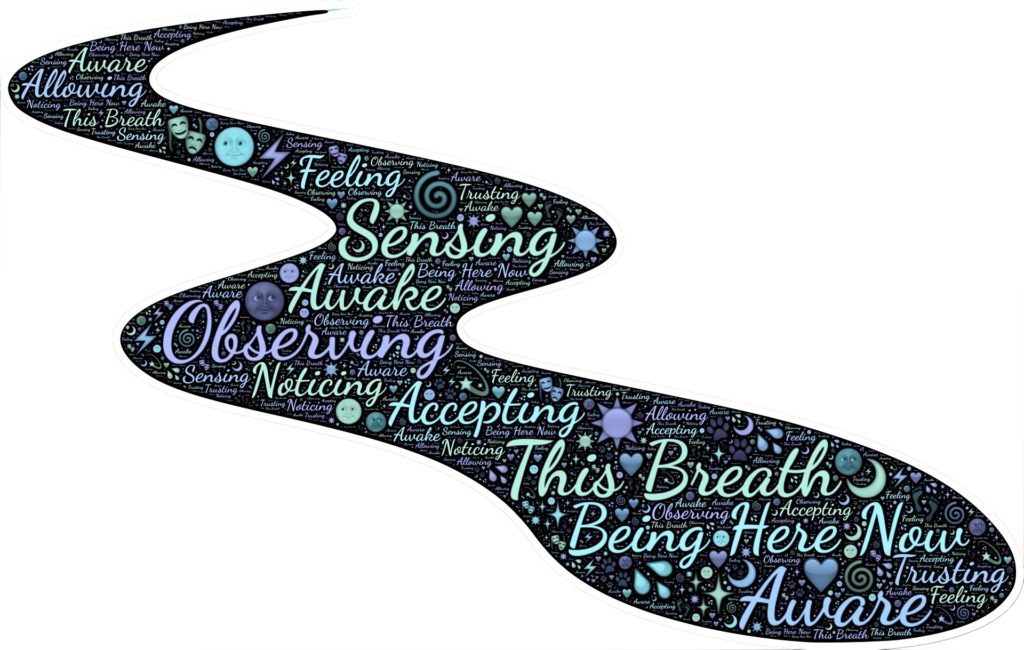Below is a list of my favorite tried and true strategies to use when life gets too overwhelming and I need a pause button. Give these a try; you will not be great at them the first time you do it, but with time and practice, your skills will improve. You will also find my instructions of what has helped me make these techniques more realistic and sustainable over time.
Quiet the noise around you
We live in SUCH a busy world that oftentimes we forget to pause and simply be; be present, in the moment, and fully feel the feels of our environment. No matter where you are (I often do this at school pick up while waiting in the car for dismissal), turn your phone/watch/radio etc. off and close your eyes while taking a few deep breaths. As you are breathing in, focus on where your breath is inside your body, and release it while pursing your lips (your breath outward can be loud to further emphasize its release from your body).
Your mind WILL wonder! From what’s for dinner later to what annual appointments you need to schedule. That’s okay, it is normal to AND expected for your mind to rebel against you and not do what you want it to do. However, remember: you are in charge, you are in control of your mind. Prompt your mind to get back on track, to the task at hand. There will be plenty of time for those thoughts, but right now, right this second, you are allowing yourself a few minutes to just be. At first, even a minute of this practice will be beneficial to your nervous system. As you practice and get better and better at blocking out the noise, increase the duration of this practice.
5-4-3-2-1
Whenever I feel anxious or overwhelmed, I bring my attention to my breathing. Again, this exercise can be completed anywhere, anytime as long as you can tune inward. Before starting this exercise, pay attention to your breathing. Slow, deep, long breaths can help you maintain a sense of calm or help you return to a calmer state. Once you find your breath, go through the following steps to help ground yourself:
5: Acknowledge FIVE things you see around you. It could be a pen, a spot on the ceiling, anything in your surroundings.
4: Acknowledge FOUR things you can touch around you. It could be your hair, a pillow, or the ground under your feet.
3: Acknowledge THREE things you hear. This could be any external sound. If you can hear your belly rumbling that counts! Focus on things you can hear outside of your body.
2: Acknowledge TWO things you can smell. Maybe you are in your office and smell pencil, or maybe you are in your bedroom and smell a pillow. If you need to take a brief walk to find a scent you could smell soap in your bathroom, or nature outside.
1: Acknowledge ONE thing you can taste. What does the inside of your mouth taste like—gum, coffee, or the sandwich from lunch?
You can change the order of the things you focus on, like five things you can hear, 4 you can hear, three you can smell, etc. The order itself doesn’t really matter as long as you stay focused on your breath and senses.
Time for negative thoughts
This may be somewhat counterintuitive, but trust the process. If you struggle with negative thinking or negative thoughts tormenting you and interfering with your daily functioning, setting time aside to simply focus on those negative thoughts and write those down can be helpful in dealing with it. Set aside 10/15 minutes each day where you allow yourself to focus on those negative thoughts, write them down, and allow them to have all your attention. Once the 10 min is up, you push the paper to the side and train your mind to not think about those thoughts until the next day when you have set the 10 minutes aside specifically for it. This will allow your brain to have a designated time to be flooded with negative thoughts/negative thinking, rather than those thoughts perturbing you on off throughout the day, when you least need it. This practice takes time and you won’t be 100% successful at it the first few times you complete it, but with time and consistent application of it, your skills will improve significantly.

Visual Reminders
If follow through is a challenge, try placing visual reminders throughout your space (whether that is your home or office). For example, if you struggle with positive self talk, place affirmation post it throughout the house as visual reminders (on the bathroom mirror, on the fridge door, in your car, in your desk area, etc); another example if you struggle staying hydrated, ensure you have cups of water throughout the house (I have cups of water in the bedroom, kitchen, at my desk, and in my car). This way, there are no barriers and no excuses when it comes to me achieving my water intake goal.



